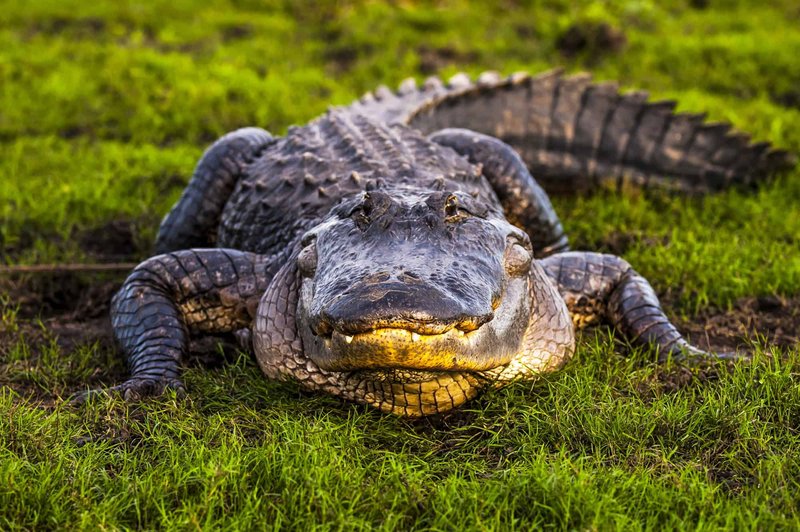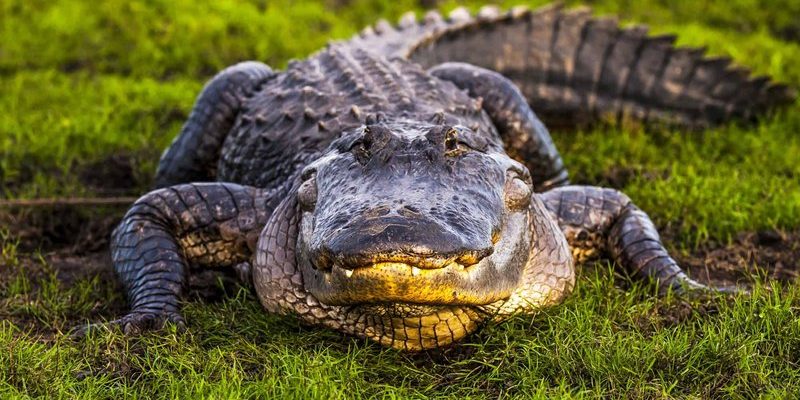
Alligators belong to a group of animals called crocodilians, which also includes crocodiles, caimans, and gharials. They thrive in various habitats, from swamps to rivers, and are primarily found in the United States and China. But their reach extends beyond these borders, making them a truly global species. Exploring their habitats is like uncovering hidden gems in a treasure map—the more you look, the more you find!
Understanding Alligator Habitats
Alligators prefer warm climates, which is why they are often found in the southeastern United States, particularly in places like Florida and Louisiana. The Everglades, for instance, is one of their most famous habitats. This vast wetland is perfect for them, offering plenty of water and vegetation where they can hunt and hide.
In addition to warm weather, alligators thrive in freshwater environments. You’ll find them in lakes, rivers, swamps, and marshes, where they can bask and hunt for food. They are also known to inhabit brackish waters, which are a mix of freshwater and saltwater, showcasing their adaptability. Honestly, it’s fascinating to think about how they can live in such diverse environments, isn’t it?
Climate and Geography
The climate plays a crucial role in where alligators are found. These reptiles are cold-blooded, meaning they rely on external temperatures to regulate their body heat. When the temperature drops, you’ll often see them basking in the sun or floating in the water to stay warm. This is why their populations are mostly concentrated in warmer areas.
Geography also influences their distribution. In addition to the U.S., alligators are native to parts of China. The Yangtze alligator, for example, is a critically endangered species found primarily in eastern China. This highlights how habitat loss and environmental changes can threaten alligator populations, making conservation efforts more important than ever.
Alligators in the United States
In the U.S., the American alligator is the most well-known species. It’s primarily found in the southeastern states, with Florida being the hot spot. The state of Florida boasts over a million alligators, more than any other state! You might even spot them while cruising through a nature reserve or enjoying a day at the beach.
Aside from Florida, alligators can also be found in parts of Georgia, Alabama, Mississippi, and Louisiana. They’re often seen in wetlands and swamps, where they play a critical role in the ecosystem as both predators and prey.
Some unique spots to catch a glimpse of these creatures include the Cypress swamps and Louisiana bayous. These areas are rich in biodiversity, which makes them ideal habitats for alligators. Just imagine gliding through the calm waters, surrounded by lush greenery, and suddenly spotting an alligator sunning itself on a log—what a sight!
Alligators Around the World
While the American alligator is the poster child, alligators are also found in other parts of the globe. The Chinese alligator, for instance, is much smaller and is mainly found in the Yangtze River basin. Its population has dwindled due to habitat loss and hunting, making it one of the rarest in the world.
Beyond these, you might be surprised to learn that there are many other reptiles within the alligator family, such as caimans found in South America. Caimans are similar but usually smaller than their American cousins, and they thrive in freshwater habitats like rivers and lakes across the continent. Imagine trekking through the Amazon rainforest and coming across one of these intriguing creatures basking on the riverbank!
It’s important to remember that alligators, like all wildlife, are influenced by their environments. As human activity encroaches on their habitats, it impacts their ability to thrive. The survival of these fascinating creatures depends on understanding their ecosystems and respecting their place within them.
Why Alligators Matter
You might be wondering: why should we care about alligators? They play a vital role in their ecosystems, helping to maintain the balance of wetland habitats. As apex predators, they help control populations of prey species, ensuring that no single species dominates. This balance supports biodiversity, which is crucial for healthy ecosystems.
Moreover, alligators are considered indicator species. This means that their health is a good sign of the overall health of their environment. If alligator populations are declining, it often signals problems in the ecosystem, like pollution or habitat destruction. Protecting alligators helps create a ripple effect that benefits countless other species, including us.
Conservation Efforts for Alligators
Conservation is vital, especially for species like the Chinese alligator, whose numbers are critically low. Efforts include habitat restoration, legal protections, and education to reduce human-wildlife conflicts. For example, in the U.S., alligator populations have rebounded thanks to regulated hunting and habitat preservation initiatives.
Additionally, organizations work tirelessly to raise awareness about the importance of alligators and their ecosystems. By educating communities, they hope to foster better coexistence between humans and these ancient reptiles. You can even participate in local conservation efforts or support wildlife organizations focused on preserving alligator habitats.
In essence, protecting alligators is about safeguarding our natural world. Each alligator is a piece of a larger puzzle, and when one piece is missing, the whole picture changes. Remember, a healthy ecosystem benefits everyone—humans included!
Now that we’ve explored where alligators are found around the world, it’s clear these incredible reptiles are much more than just fearsome predators. They play crucial roles in their habitats, help maintain ecological balance, and are fascinating creatures to boot. Whether you catch a glimpse of an American alligator basking in the Florida sun or learn about the rare Chinese alligator, there’s something enchanting about these ancient reptiles.
So the next time you think of alligators, remember their importance in our ecosystems. They deserve our respect and protection, and understanding where they live is the first step. Let’s keep our eyes open for these incredible creatures and support efforts to ensure they thrive for generations to come!

